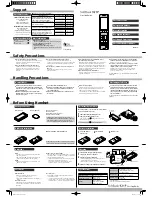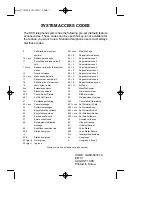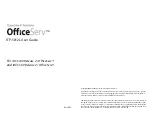
1-10
Cisco Unified IP Phone 7960G and 7940G Administration Guide for Release 8.0 (SIP)
OL-7890-01
Chapter 1 Product Overview
Signaling Support
•
Configure voice activity detection (VAD)
Signaling Support
The following signaling and transport features are supported:
•
G.711 (mu-law and a-law) and G.729a audio compression
•
In-band dual tone multifrequency (DTMF) support for codecs for touch-tone dialing
•
Out-of-band DTMF signaling (RFC 2833)
Dial-Plan and Messaging Support
The Cisco SIP IP phone supports a dial plan that enables automatic dialing and generation of a selectable
secondary dial tone. The Cisco SIP IP phone also supports the following:
•
Local directory configuration (save and recall) and automatic dial completion
Each time a call is successfully made or received, the number is stored in a local directory that is
maintained on the phone. The maximum number of entries is 32. Entries are aged out according to
usage and age. The oldest entry that has been called the least number of times is overwritten first.
This feature cannot be changed by the phone user; however, up to 20 entries can be “locked” (using
the Locked softkey) so that they will never be deleted.
•
Message waiting indication using unsolicited NOTIFY
When a caller leaves a voice message, a light indicates that a new voice message is in your mailbox.
If you listen to the message but do not save or delete the message, the light remains on. If you listen
to the new message and save or delete it, the light goes off. The message waiting indicator is
controlled by the voice-mail server. The indication is saved over a phone upgrade or reboot.
•
Dial-plan support for the asterisk (*) and pound (#) characters
In previous versions of the dial plan, the “*” and “#” characters were not matched if specified as
dialed digits. The “*” character was a wildcard equal to “match one or more characters.” The “#”
character was interpreted as “dial immediately.” Support was added for the “*” character by adding
“\” as an escape character and the “#” character as a digit in the dial plan. Backward compatibility
for the “#” and “*” characters is supported.
•
Distinctive ringing
If the INVITE message from the server contains an Alert-Info header, distinctive ringing is invoked.
The format of the header is “Alert-info: x.” The value of “x” can be any number. This header is
received only by the phone and is not generated by the phone.
Distinctive ringing is supported when the phone is idle or during a call. In the idle mode, the phone
rings with a different cadence. The selected ringing type plays twice with a short pause in between.
In call-waiting mode, two short beeps are generated instead of one long beep.
•
Configurable and user-selectable dial tone
In earlier releases, specifying a comma (,) in the dial plan caused the phone to play the default
secondary dial tone. With this release, specific user-specified tones can play. You can specify up to
three different secondary dial tones in a single dial-plan match template. Tones play in the order in
which they are listed.
















































